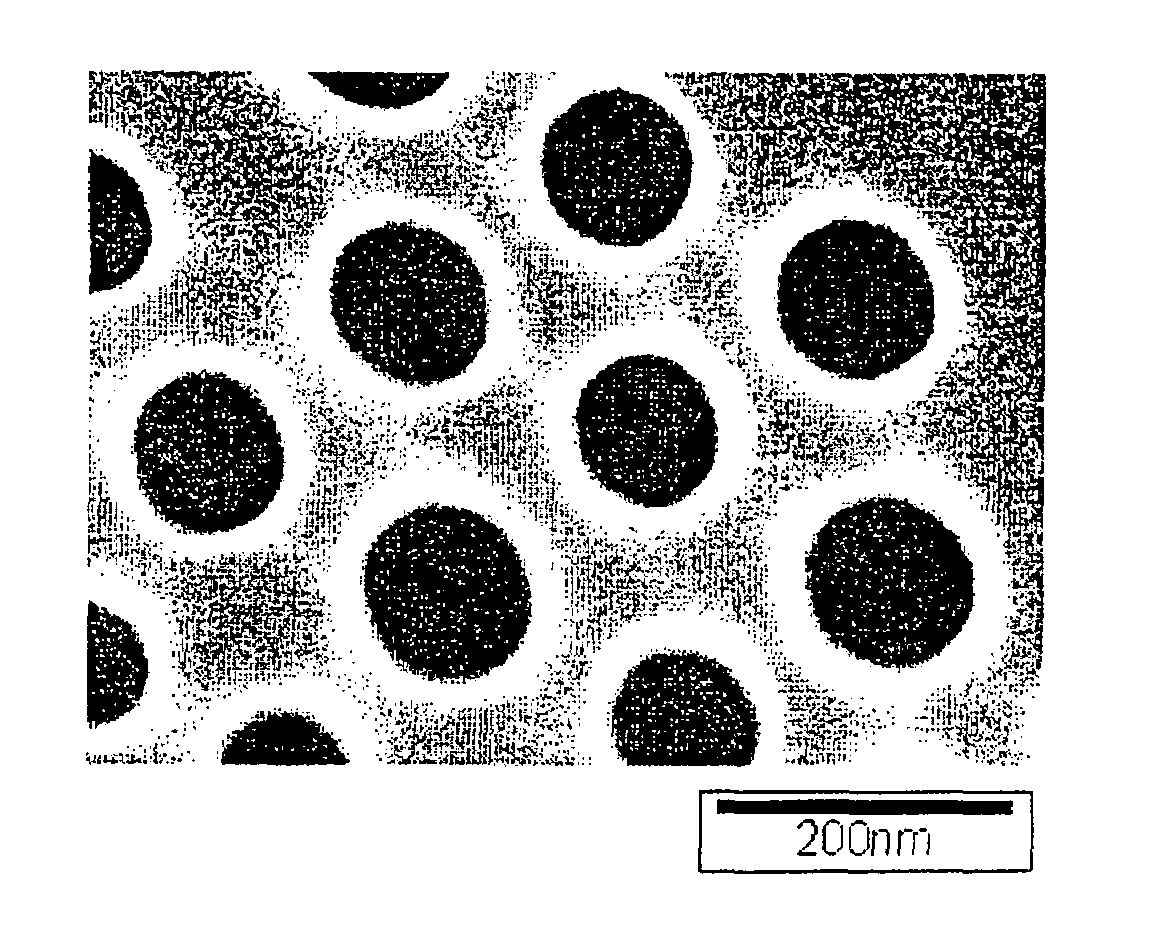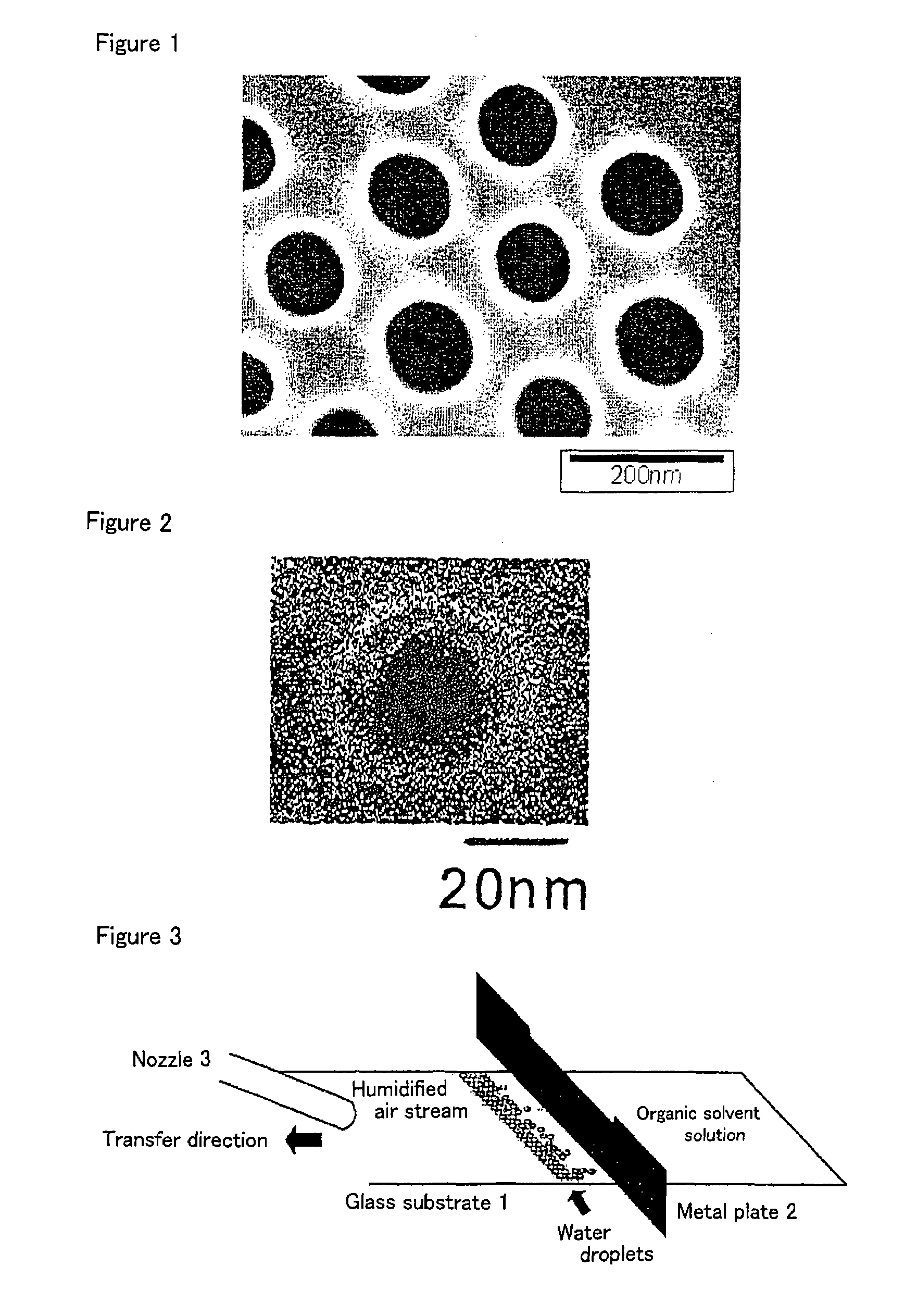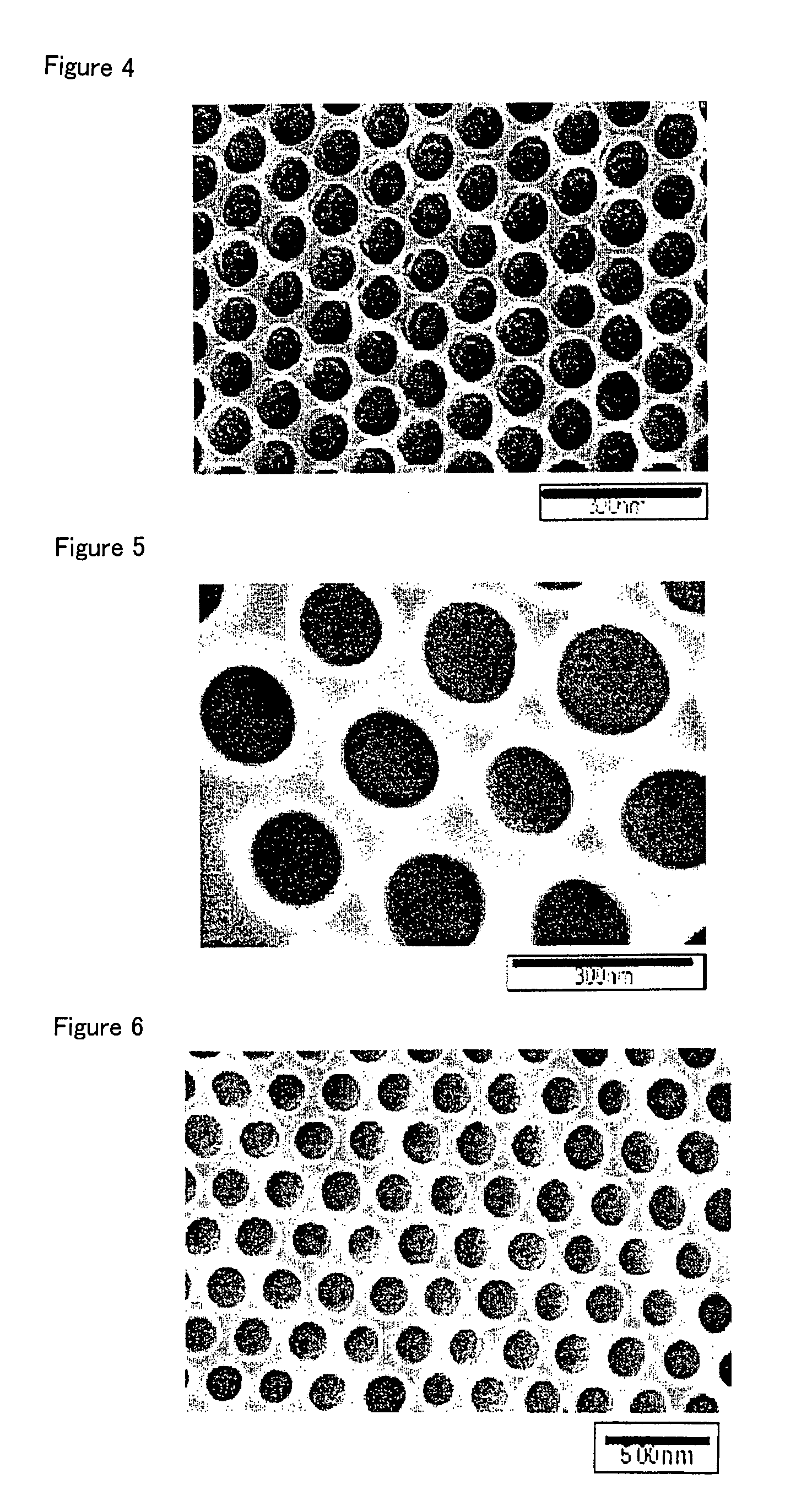Process for production of submicrohoneycomb structures
a technology of honeycomb and production process, which is applied in the field of production process of honeycomb structure, can solve the problems of complicated organic synthesis process, high cost, and difficult to solve, and achieve the effect of less tim
- Summary
- Abstract
- Description
- Claims
- Application Information
AI Technical Summary
Benefits of technology
Problems solved by technology
Method used
Image
Examples
example 1
[0058]A solution of AK-225 of a compound represented by the following formula 1 (JP-A-2000-143726) which is a fluorinated resin compound, was prepared in a concentration of 1.0 g / L. This solution (30 μL) was dropped on a glass substrate, and placed in parallel to an air stream (flow rate: 10 L / min.) having a relative humidity of 40%.
[0059]The solvent evaporated instantly (within 1 second) to give a thin film, which was transparent by visual observation from the vertical direction. The structure formed in the prepared thin film was observed by a scanning electron microscope. As a result, it was found that a honeycomb structure having pore diameters of 100 nm or below has been formed (FIG. 1). Further, in the edge part, pores having diameters of around 20 nm at minimum were also observed (FIG. 2).
[0060]
example 2
[0061]In order to produce continuously a thin film of honeycomb-like porous body with fine pores having pore diameters of 100 nm or below, an apparatus shown in FIG. 3 was assembled. In the apparatus of FIG. 3, as substrate 1, a glass substrate which was fluorine-coated by treating with a fluorinated alkylsilane coupling agent, 1H,1H,2H,2H-perfluorooctyl-trichlorosilane (produced by AZmax Co., Ltd.), followed by washing, was used. Further, metal plate 2 was installed above substrate 1 with a gap of 50 μm.
[0062]Substrate 1 applied with the organic solvent solution same as in Example 1 was transferred at a speed of 2 mm / second from the right side toward the left side on the Figure. After adjusting a thickness of the thin film on the substrate to 50 μm, air (flow rate: 10 L / min.) having a relative humidity of 40% was fed from nozzle 3. By this process, a honeycomb-like porous body having pore diameters of 100 nm or below was continuously produced (FIG. 4).
[0063]Further, in the above pr...
PUM
| Property | Measurement | Unit |
|---|---|---|
| diameters | aaaaa | aaaaa |
| thickness | aaaaa | aaaaa |
| surface tension γL | aaaaa | aaaaa |
Abstract
Description
Claims
Application Information
 Login to View More
Login to View More - R&D
- Intellectual Property
- Life Sciences
- Materials
- Tech Scout
- Unparalleled Data Quality
- Higher Quality Content
- 60% Fewer Hallucinations
Browse by: Latest US Patents, China's latest patents, Technical Efficacy Thesaurus, Application Domain, Technology Topic, Popular Technical Reports.
© 2025 PatSnap. All rights reserved.Legal|Privacy policy|Modern Slavery Act Transparency Statement|Sitemap|About US| Contact US: help@patsnap.com



